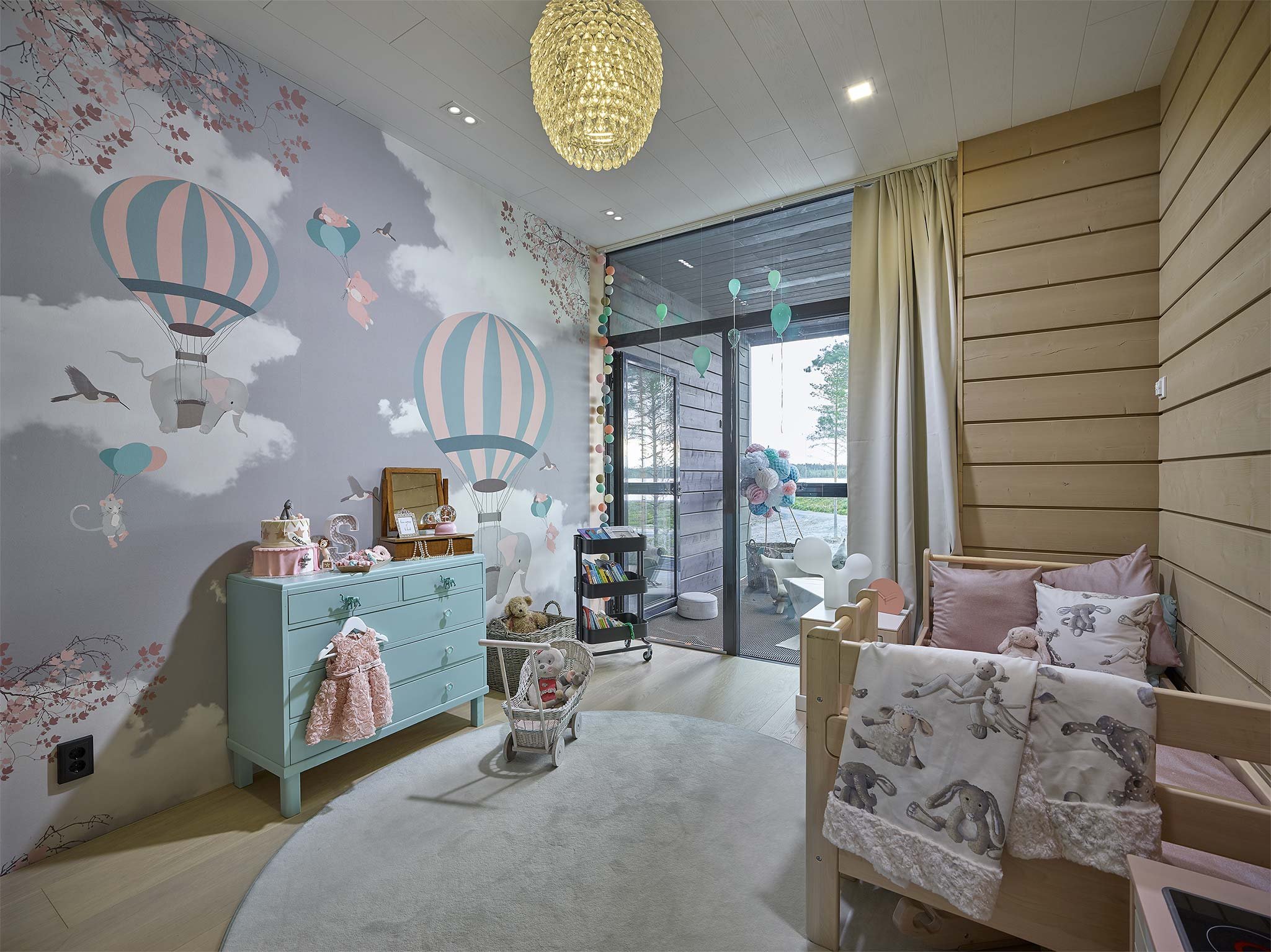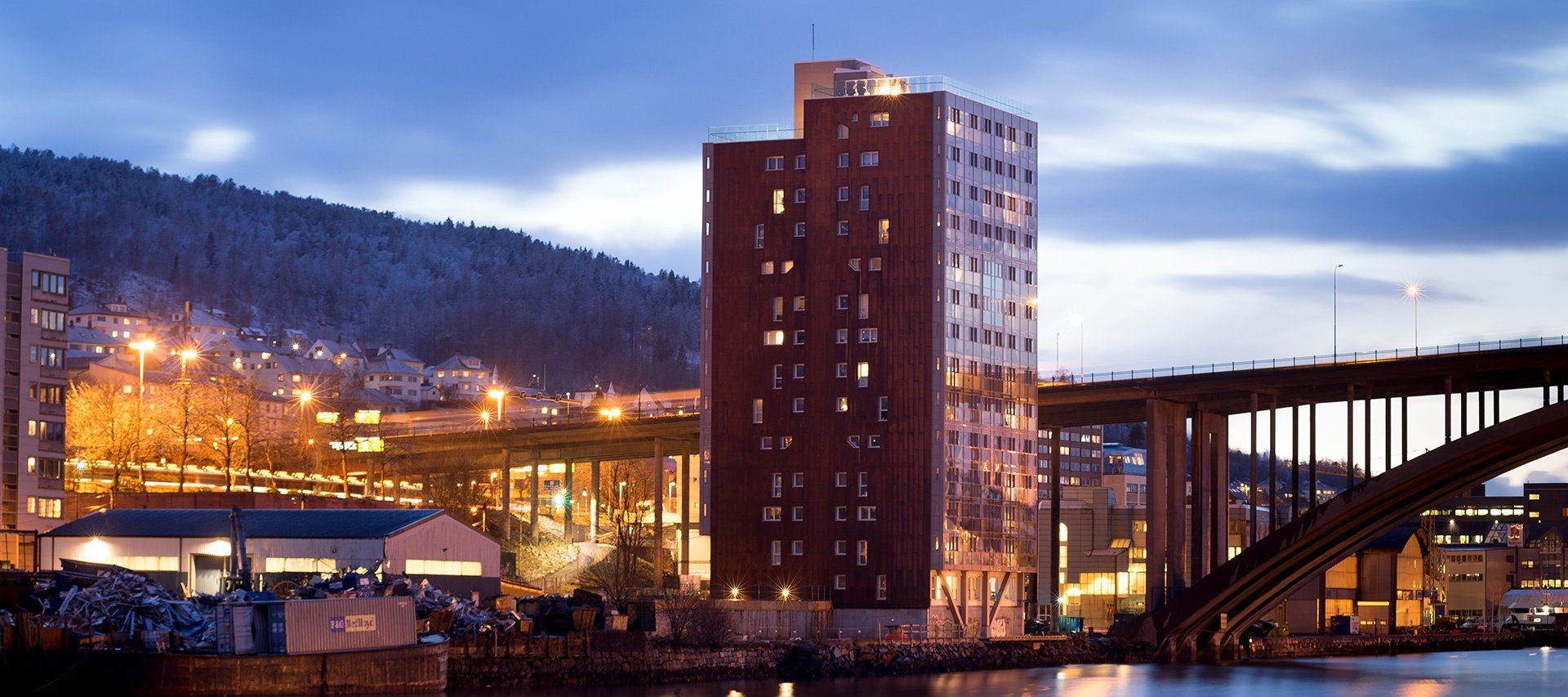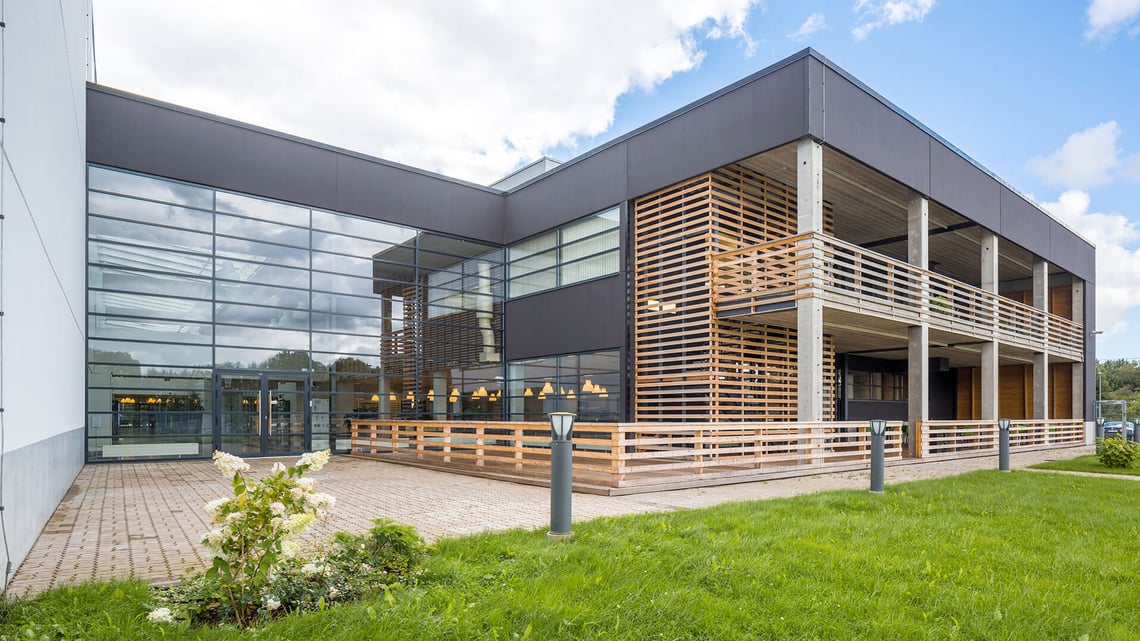The type of fire retardant and the treatment method used affect how wood products behave in a fire. The choice of fire retardant also affects the durability of the fire protection, the treatment method as well as the safety of the treatment and surfaces. Nordtreat fire retardants perform outstandingly in comparison with other products in all of the above-mentioned aspects.
The use of wood in construction can be increased by utilizing fire retardant treated wood products. As an example, there are various possibilities to increase the visibility of wooden surfaces by using B-s1, d0 classified wood products. Improved fire classification can be achieved using various intumescent paints and translucent fire retardants when the treatment is done in accordance with the manufacturer's instructions. However, the designers and those responsible for purchases have to be diligent when assessing the testing of fire protected products, classification, certifications and the CE marking on the end product.
In practice, the most important characteristic of a fire retardant affecting safety in the long run is the durability of the fire protection. Therefore, one should be aware of the aspects that affect the durability of fire protection treatments before selecting the fire retardant, both in the industrial manufacturing of timber construction products and when treating wood products with a fire retardant on a construction site.
DURABLE NON-TOXIC FIRE PROTECTION FOR INDOOR AND OUTDOOR USE
Most fire retardants available on the market contain compounds that are harmful to humans and the environment, such as boric acid, boron, bromides, formaldehyde and ammonia. A totally non-toxic fire retardant is a safer option and, in addition to excellent fire protection, it also provides other advantages. Nordtreat fire retardants contain no harmful compounds. They are water-based, pH neutral solutions that affect the pyrolysis of wood by creating a protective char layer.
Thorough tests and certifications by third parties show that non-toxic Nordtreat fire protection solutions exceed or match the durability reported by other manufacturers. In addition to the limited solubility of the fire retardants, the durability of Nordtreat products is based on patented additives that help active ingredients bind to the wood tissue.

Honkatalot Riihi, Seinäjoki
The fire protection of indoor timber structures with Nordtreat fire retardants, such as interior panels, staircases and visible load-bearing structures, remains effective unless the wooden surface is damaged. In order to ensure the safety of those living and working in the spaces, it is essential that fire protection treatments are carried out in accordance with a certified process or the manufacturer's instructions and that the product also meets the requirements regarding the building's indoor air quality.
For example, the NT DECO fire retardant, which is available in numerous tones, belongs to emission class M1 and it also has the Indoor Air Comfort, BREEAM and LEEDv4 certifications as well as AgBB classification. In addition to zero emissions, it is important to select a product that can be used for maintaining the surfaces in case of damage. For example, many boron-based fire protection products are not suitable for on-site application or damage repair, making it difficult or impossible to treat the surfaces afterwards while maintaining the fire classification.

Apartment building "Treet", Bergen
On exterior cladding and, for example, balcony and terrace structures, the fire protection of wood products normally lasts for 5-15 years, depending on the fire retardant. This protection also requires that the wooden surface is not mechanically damaged. The durability of intumescent paints is in some cases slightly better than that of translucent fire retardants such as those produced by Nordtreat. They do, however, slow down the construction process because wood treated with intumescent paint almost always requires a separate surface treatment on site.
During the life cycle of a building, the costs of intumescent painting are often higher due to the high initial costs and first maintenance procedures required soon (1 to 2 years) after the construction project. Certified wood products industrially treated with translucent Nordtreat fire retardants are ready to be installed and used as such. The maintenance interval is 5 to 15 years, depending on the location.
It is recommended that protected timber structures are maintained using the same fire retardant that they were originally treated with.
VERIFYING THE DURABILITY OF FIRE PROTECTION ON WOOD PRODUCTS
The European standard EN 16755:2007 (Durability of reaction to fire) took effect in January 2018, allowing the durability of fire protection to be classified as follows:
- INT1 (dry interior spaces)
- INT2 (humid interior spaces / partly covered exterior spaces)
- EXT (exterior spaces exposed to weathering)
The classification standard is based on the previously used standards (Nordtest NT054 and CEN/TS 15912) which were updated by CEN to create a harmonized standard (EN 16755). The classification is based on the exposure of fire protected construction products to weathering (either natural or accelerated in a chamber) and fire testing of items after being exposed to weathering.
DIFFERENCES IN DURABILITY BETWEEN INDUSTRIAL FIRE PROTECTION AND ON-SITE TREATMENTS
Is on-site fire protection of wood products as durable as industrial fire protection? In Europe, the CE marking is mandatory for construction products and on-site treatments always require a site-specific approval. On-site treatments are, however, occasionally needed if the construction product in question is not available with the CE marking or when building elements have been installed without considering the required fire properties during the design phase. Sometimes there are also situations where the fire protection requirements are tightened after the design phase.
In order to achieve the best outcome in terms of uniform quality, durability, quality assurance and costs, an industrial treatment by a manufacturer with CE marking rights is almost without exception the right solution.

